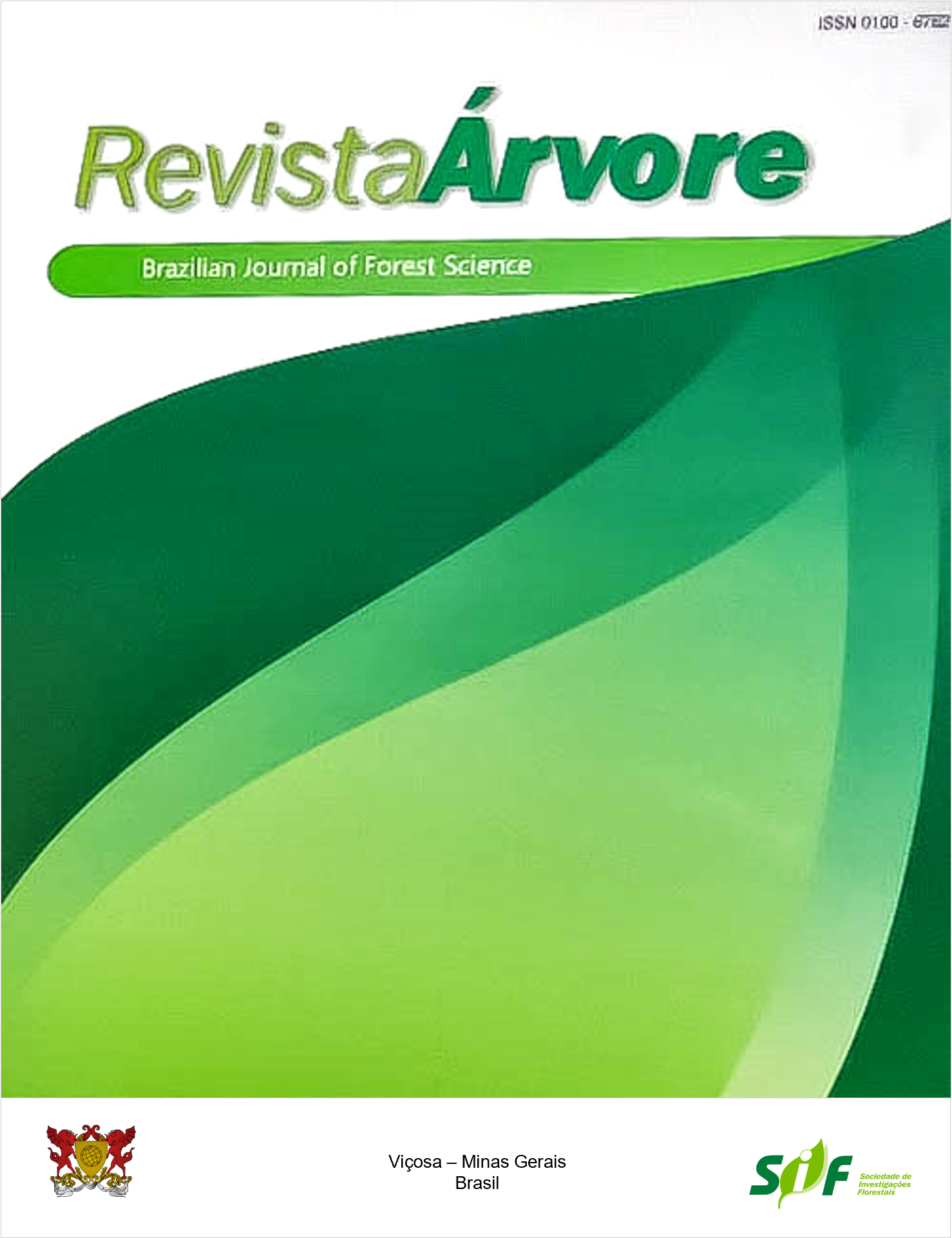USE OF DESTRUCTIVE AND NON-DESTRUCTIVE METHODOLOGIES TO ESTIMATE STEM BIOMASS ACCUMULATION AND CARBON STOCK IN AN EUCALYPTUS FOREST
Keywords:
Basic wood density, Forest plantation, Stem volumeAbstract
Predicting wood biomass and carbon stock contents in planted forests can vary due to limitations associated with the measurement of parameters. Therefore, reducing possible errors generated over biomass and carbon stock quantification is an important step in obtaining reliable data. The study aimed to compare the use of destructive and non-destructive methodologies for predicting biomass and carbon stock in a planted Eucalyptus forest. Scaling was performed on 21 trees and 3 methodologies for carbon stock estimation were compared. For methodology 1, a control sample was harvested, sectioned, weighted in the field, and the carbon stock calculated based on these data. Methodology 2 was also destructive, as trees were harvested, scaled and the carbon stock predicted based on these data. Methodology 3 was non-destructive, as trees were scaled upright with the aid of equipment and the predicted carbon stock was based on these data. Biomass and carbon stock were compared by Test F and no statistical difference was observed. The data were separated according to diametric classes and compared by the Kolmogorov-Smirnov test, and again no significant difference was observed. Furthermore, three equations were generated based on the Schumacher & Hall model and compared by the identity test model and no differences between the methodologies were observed. Thus, both nondestructive and destructive methodologies herein evaluated were effective and showed equal results to the control sample. Moreover, the use of the non-destructive methodology reduces time and cost destined to predicting biomass and carbon stock.
Keywords: Basic wood density; Forest plantation; Stem volume
Downloads
Published
How to Cite
Issue
Section
License
Copyright (c) 2022 Revista Árvore

This work is licensed under a Creative Commons Attribution 4.0 International License.
All authors agreed to submit the work to Revista Árvore and granted the exclusive license to publish the article. The authors affirm that it is an original work and has not been previously published elsewhere. The scientific content and opinions expressed in the article are the sole responsibility of the authors and reflect their opinions, not necessarily representing the opinions of the editorial board of Revista Árvore or of the Society of Forest Investigations (SIF).




